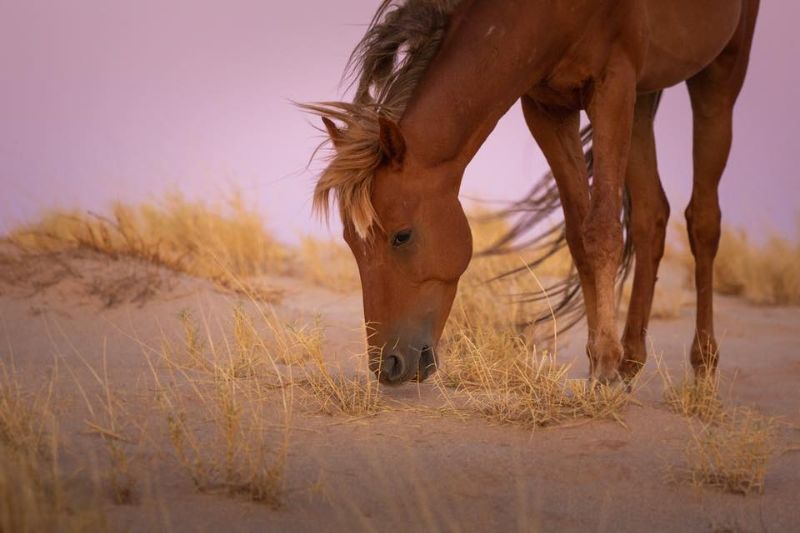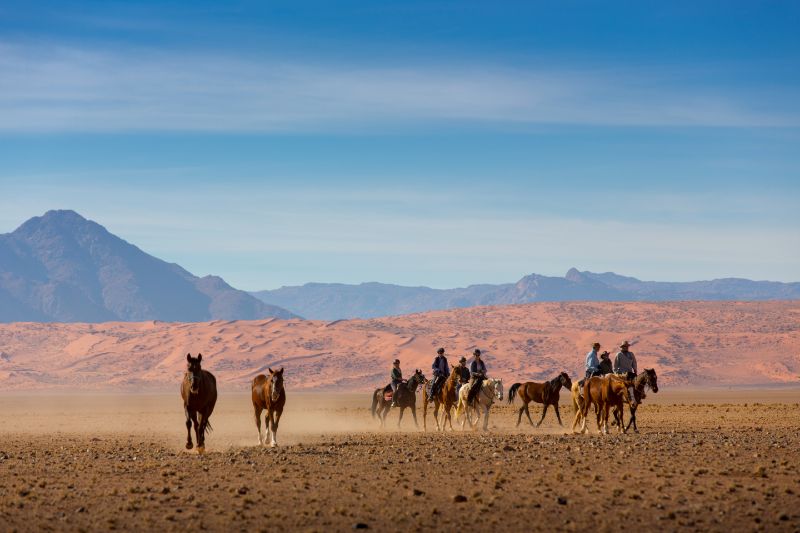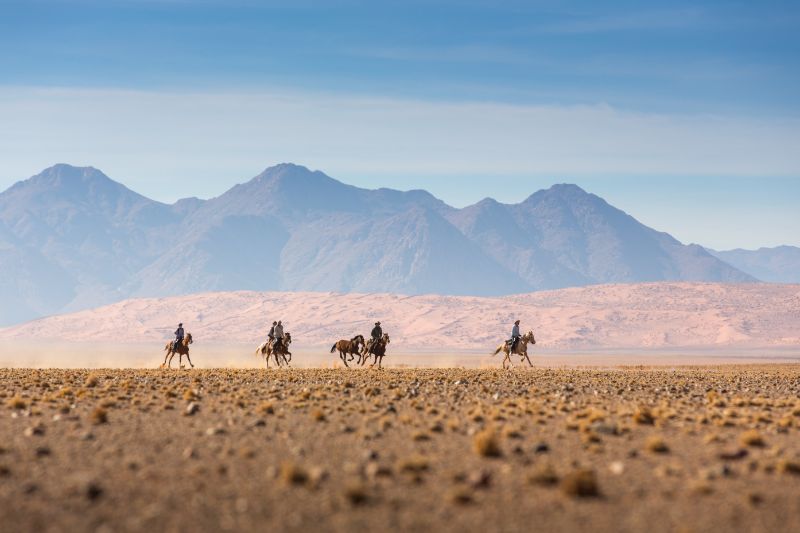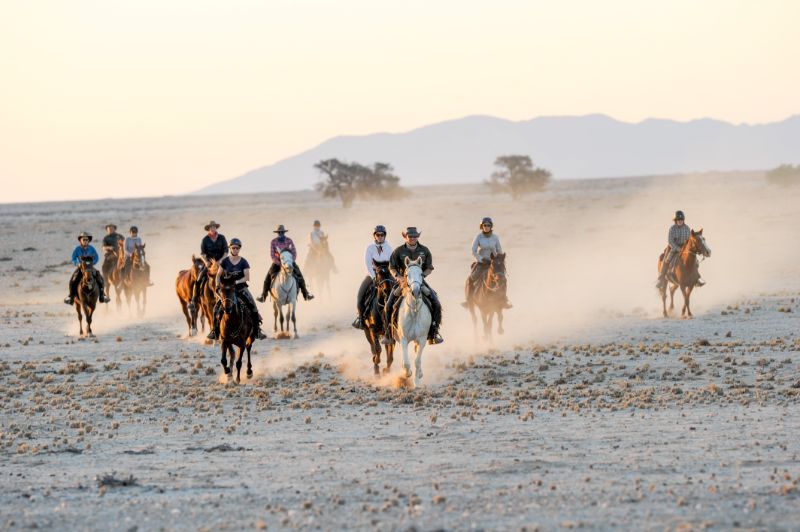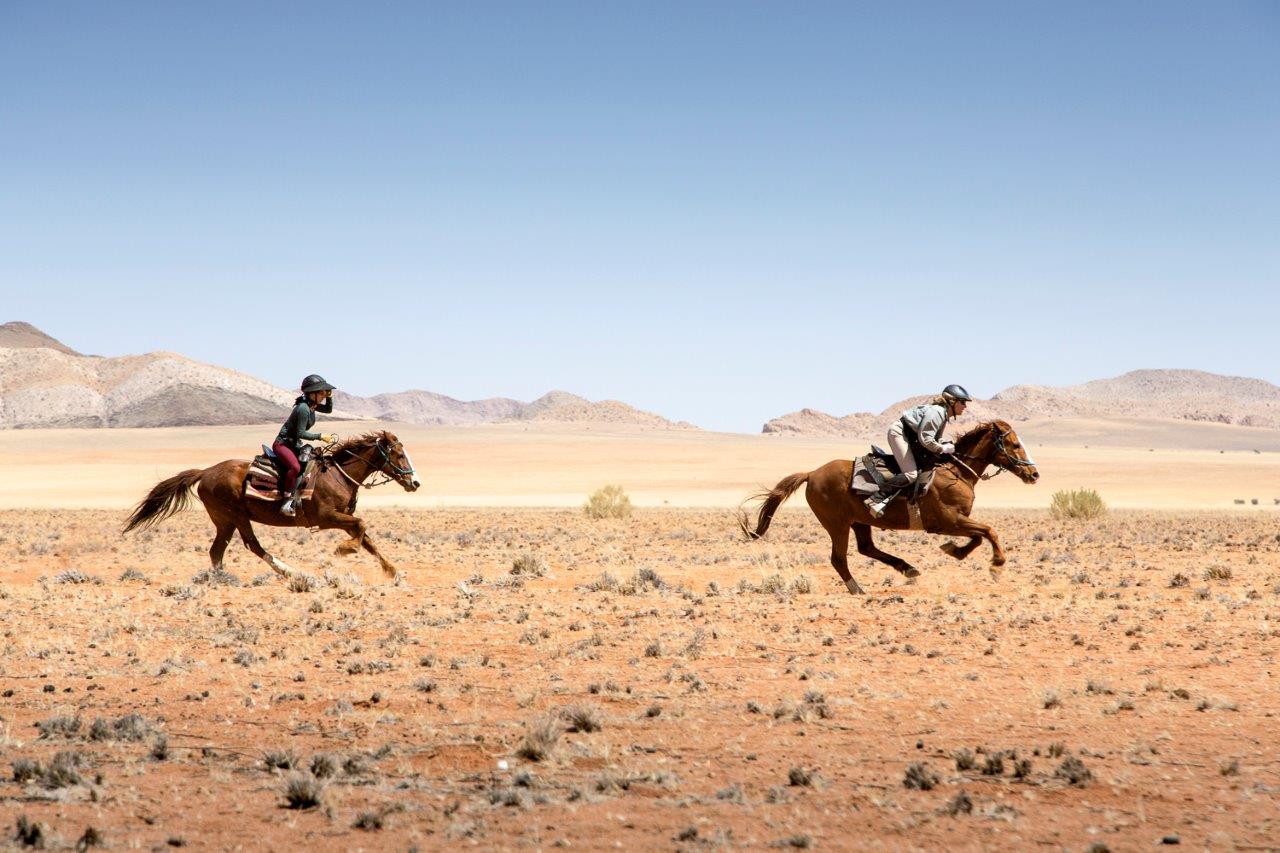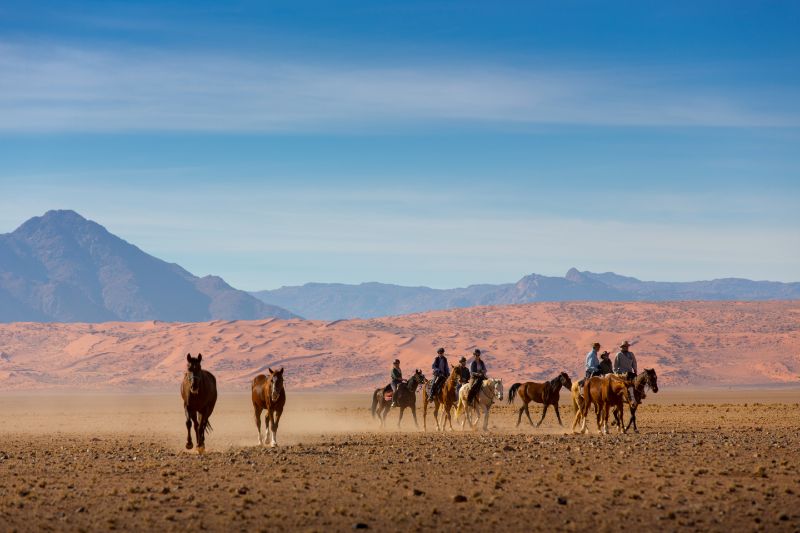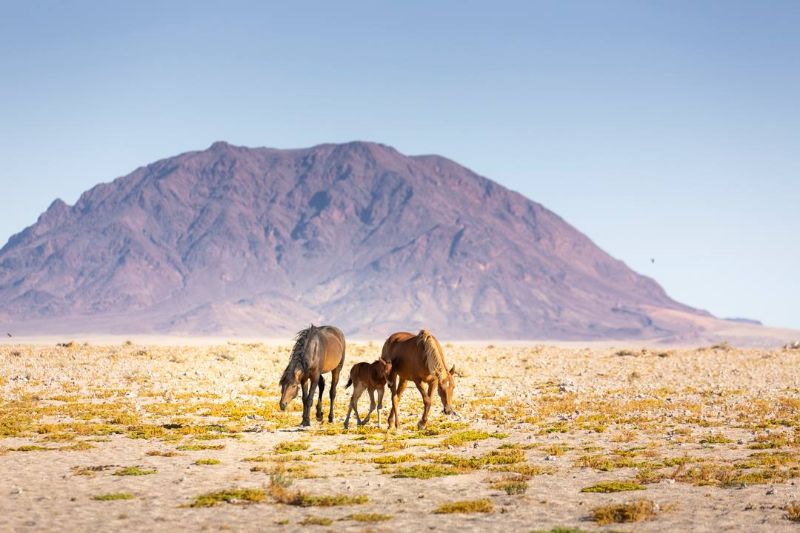The Namibia Wild Horses Foundation (NWHF) was registered as a non-profit foundation in 2012 after a group of passionate individuals saw the need to protect the last remaining wild horses in Namibia. The Namibs, as the free horses of the Namib Desert are called, hold a powerful fascination for horse and nature lovers. Living on the barren plains around Garub on the eastern fringe of the Namib Desert, their origins are shrouded in mystery.
One theory is that diamond prospectors brought horses more than a century ago to since-abandoned mining fields. Another theory, says author and historian Manni Goldbeck, is that they arrived with South African soldiers, who landed in Luderitz in 1915. The troops were bombed by the German troops they were pursuing, scattering the horses into the Namib Desert, where they remained. These horses have not only survived for over a century in a harsh desert, but they have thrived! However, particularly in times of extreme drought, the well being of the horses requires careful management.
NWHF has conducted research and long-term monitoring for almost 30 years, keeping careful records of the lives and deaths of the Namibs. The main aim of the Foundation has always been the horses’ quality of life, and to this end it advises the relevant Ministry in assisting with feeding programmes in times of drought as well as infrastructure maintenance where required. NWHF works with researchers to understand the link between the horses and predators in this region. In addition, in collaboration with the Ministry of Environment, Forestry and Tourism (MEFT), a new rock-gabion hide was constructed, allowing visitors to sit in comfort and watch the horses in their natural environment.
The Foundation raises funds through donations, including a percentage of the sale of branded clothing and a percentage of the sale of a book: Wild Horses in the Namib Desert by Mannfred Goldbeck, Ron Swilling and Telané Greyling. Several of the directors are from Namibia’s tourism, veterinary and environmental management and research sectors.








